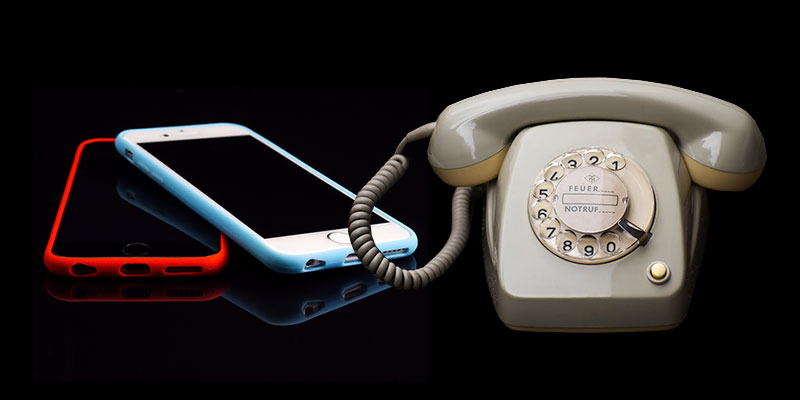Today is National Telephone Day, and America virtually has achieved universal coverage — including in Alabama.
According to the latest Census Bureau data, all but about 3 million homes have a landline or a cell phone. That is 2.5 percent of all households.
The share of homes in Alabama without phones is slightly — but not dramatically — higher, at 2.8 percent.
It wasn’t always so.
In 1960, the first year the Census Bureau asked the question, a staggering 40.8 percent of Alabama households — 360,950 — had no phone. That is nearly twice the national average of 21.5 percent. Only Mississippi (54.7 percent), Arkansas (48.6 percent), South Carolina (44.7 percent) and North Carolina (41.6 percent) had a higher proportion of homes without phones.
Frank Burt remembers those days well. The Baldwin County Commission chairman moved to the county seat of Bay Minette in 1941 when he was in third grade. By the early 1960s, he said, his home still did not have a private phone line. A shared so-called party line provided access to all of the eight to 10 families who lived in his area.
A pharmacist, Burt wanted a private line in his home to answer questions from customers a night and talk to doctors who saw patients in the evenings.
The phone company turned him down.
“They just wouldn’t respond to my request,” Burt said. “I called the Public Service Commission and was able to get a little pressure at the top.”
Burt said he got his private line in 1962, but the party lines persisted for years. People served by them had to share access with multiple neighbors. Anyone who wanted to use the phone had to make sure a neighbor was not already on a call.
And anyone on the line could listen in. Burt recalled trying to avoid snooping neighbors when he was talking to the woman would later would become his wife.
“That was something, when people would be listening in on your conversation,” he said. “You had to watch what you said.”
The five decades following 1960 saw a phenomenal increase in the number of homes with phones, first with landlines coming to little-served rural areas and later through the proliferation of cell phones.
Households that previously had no service got telephone lines, and homes that used cheaper party lines converted to private service.
“Gradually, people wanted private lines, and I guess they could afford them,” Burt said.
The cause of those dramatic changes is a mix of government regulation, programs to help the poor and good, old-fashioned market economics.
Still, as recently as 1990, nearly 9 percent of Alabama households still had no phone, compared with a 5.2 percent national average. In 1996, Congress passed the Telecommunications Act, which opened monopoly phone companies to competition from wireless services. Later, new technologies — such as Voice over the Internet (VoIP) service — came online.
Variation still exists within the state. Just 1.7 percent of Etowah County had not phone, according to the latest census survey. That led the state. Coverage was 98 percent or better in Shelby, Tallapoosa, Montgomery and Crenshaw counties. Poor, rural counties lag. In Wilcox County, for instance, 10.9 percent of households had no phone. The figure was greater than 7 percent in Bullock, Dallas, Clarke and Monroe counties.
Still, as a whole, Alabama no longer is an outlier.
“If he could see how the free market and innovation have revolutionized the telephone industry, Alexander Graham Bell would be almost as shocked as George Washington would be at the recent radical attacks on our Constitution,” Alabama Public Service Commission President Twinkle Andress Cavanaugh said in a statement.
Daniel Smith, the professor of economic freedom at Troy University, agreed that technological innovation helped drive phone use. He pointed to a Harvard Business Review article noting that it took decades, beginning before 1900, for phone use to reach 50 percent of American households. Cell phones, by contrast, achieved the same level of penetration in about five years.
Smith credited the relatively light hand of government. Monopoly telephone companies had little incentive to innovate and the regulatory bureaucracy was slow, he said.
“It really locks in ineffectual technology,” he said.
Cell phone companies had competition and few regulatory hurdles to clear, Smith added.
“They were able to kind of leapfrog the existing regulatory structure,” he said.
Smith compared the phone industry to the upheaval caused by ride-sharing companies and like Uber and Lyft that rose up to challenge traditional taxi companies.
The competition, Smith said, “presents an unleashing of entrepreneurialism.”
Today, of course, landlines are in rapid decline. As of last year, less than half of American households had them. But the share of households with phone service continues to increase as cell phones multiply.
Even Burt, the Baldwin commissioner, has come full circle. He said he dropped his landline about a year and a half ago and relies exclusively on his cell phone. With the expense of maintaining traditional phone service rising and no one home to answer it after the death of his wife, he said he did not see a point in keeping it.
So raise an iPhone or a Droid in recognition of National Telephone Day. The phone ain’t what it used to be, but more people than ever can “reach out and touch someone,” as the old ad went.
@BrendanKKirby is a senior political reporter at LifeZette and author of “Wicked Mobile.”
Don’t miss out! Subscribe today to have Alabama’s leading headlines delivered to your inbox.
